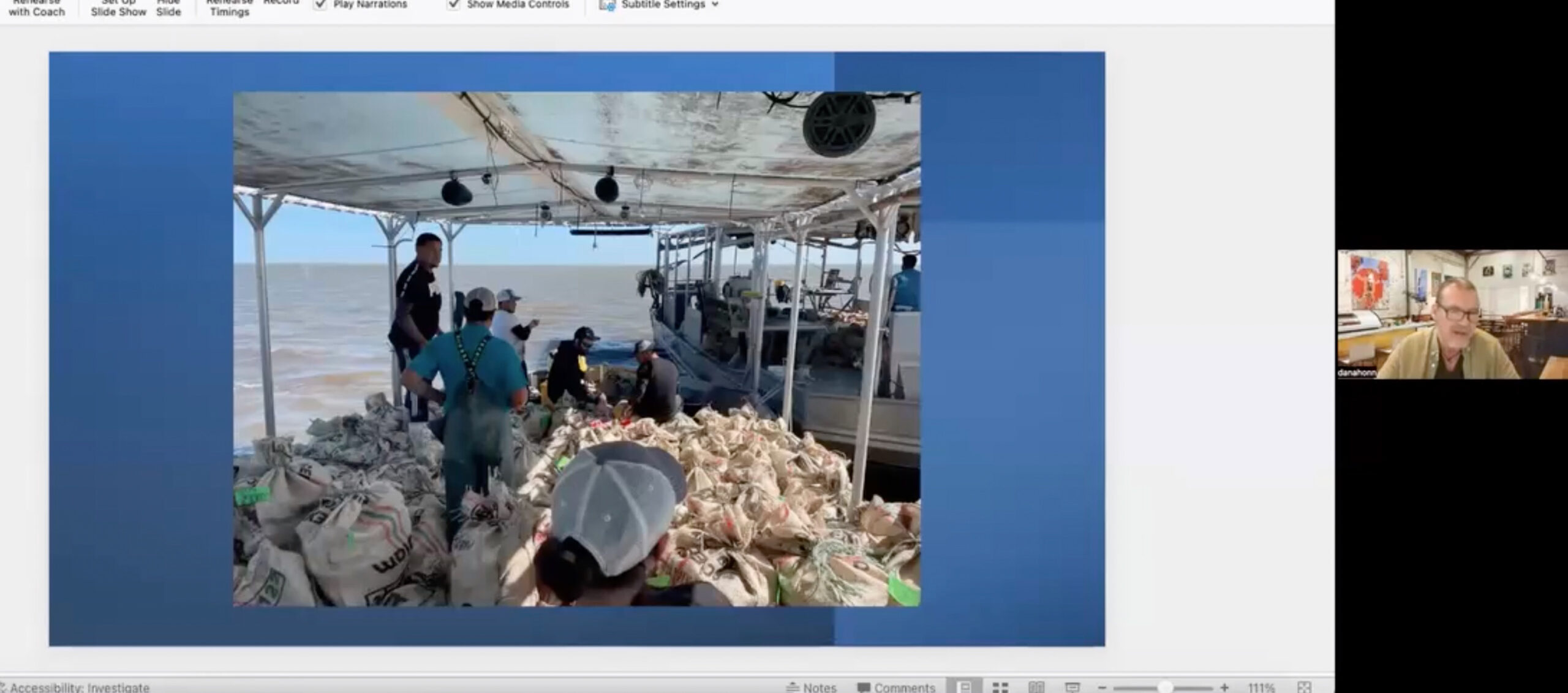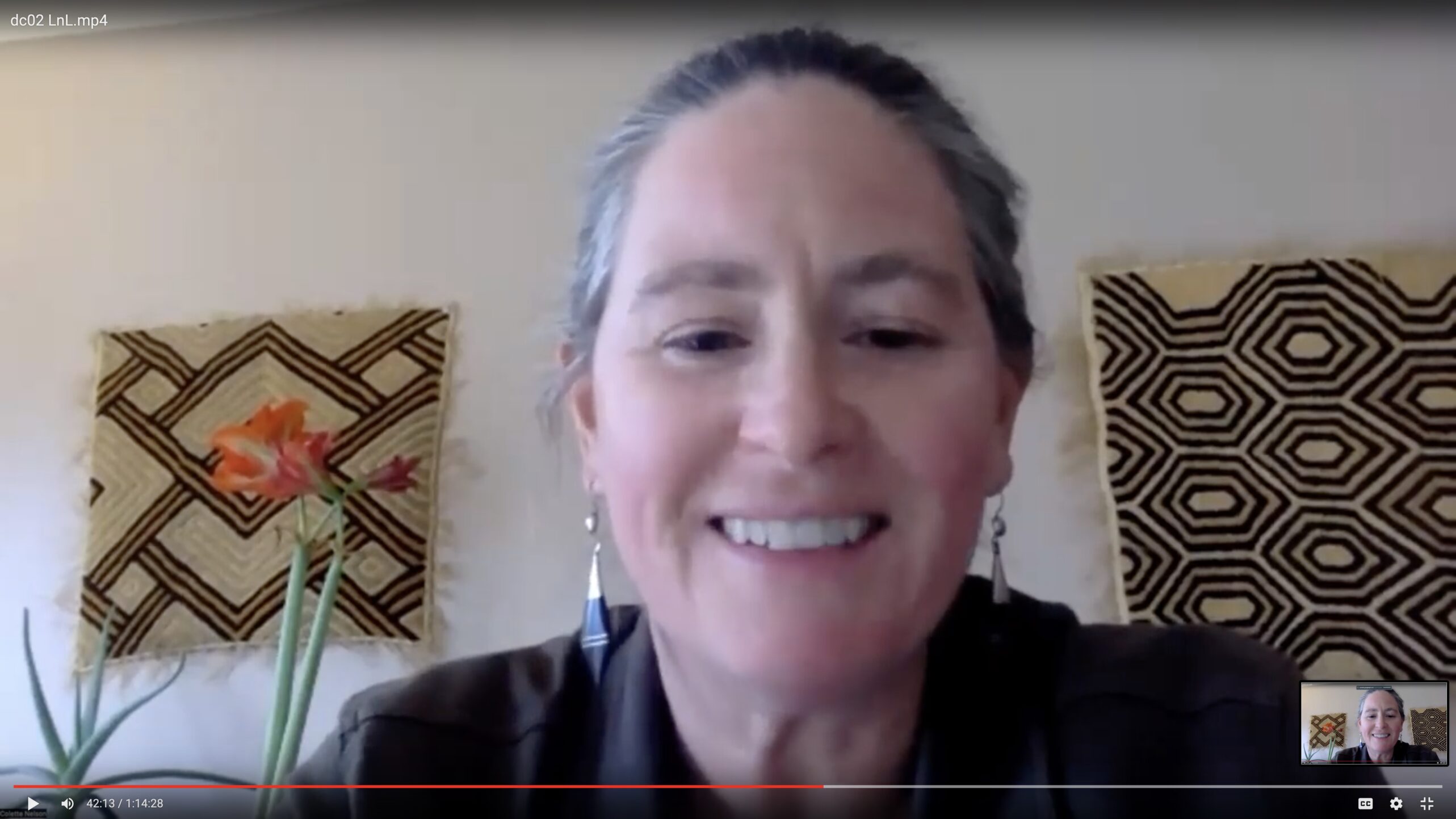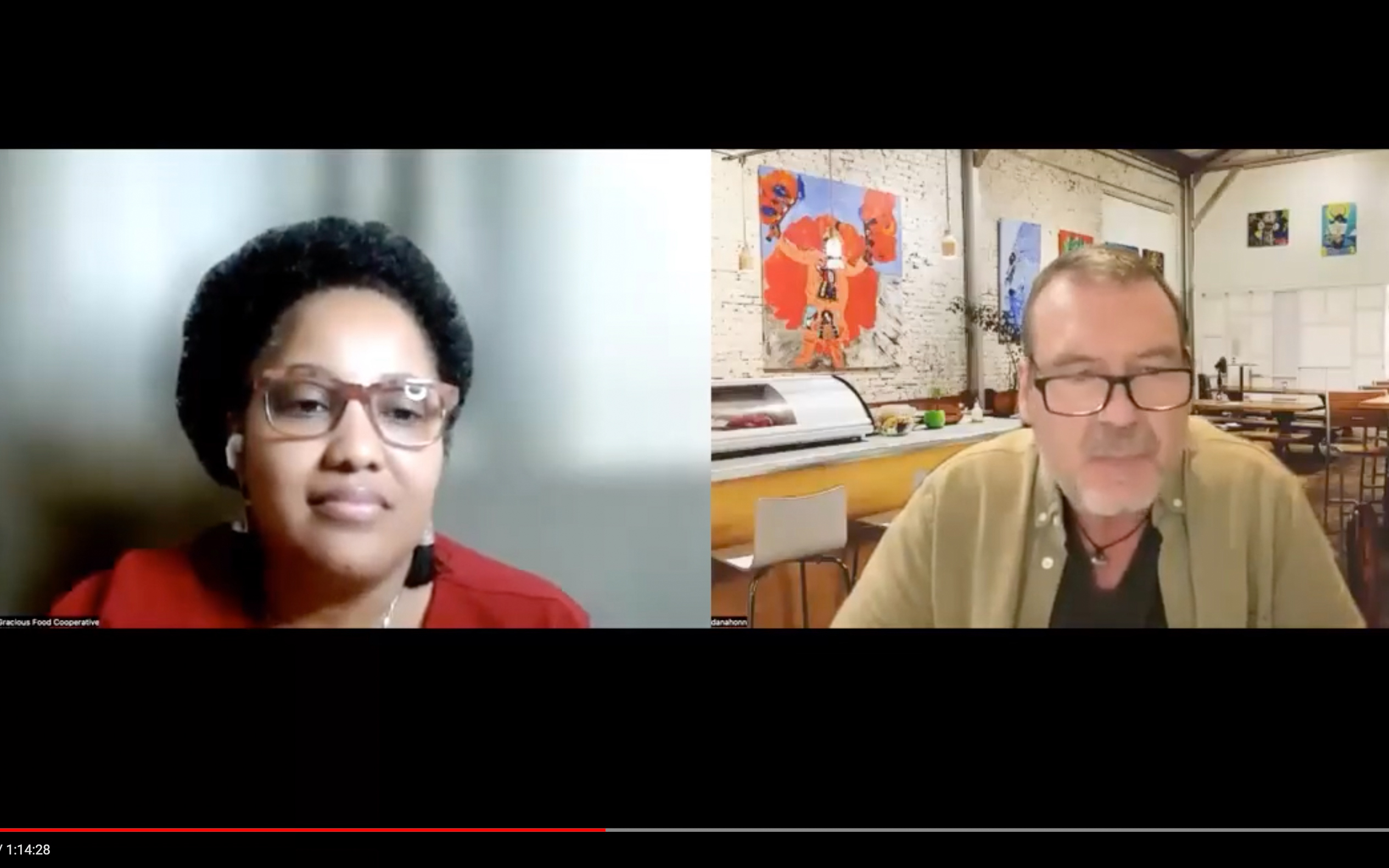Education. Relationships. Trust. Transparency. Quality. Consistency. Seasonality.
These are some key factors chefs cite when asked what sourcing sustainable seafood entails. The process is not linear. For example, they need to educate themselves and their front- and back-of-house staff about what local seafood is sustainable, when it’s seasonally available, and why it’s on the menu. They also need to educate customers about why they should pay a few bucks more for domestic, wild-caught shrimp instead of the cheaper farmed shrimp they can get down the street.
Chefs from across the country talked about those issues during Chefs on Seafood: Sourcing Sustainable Seafood, a chef-focused webinar hosted by Don’t Cage Our Oceans on February 5. Chefs shared their perspectives on facing common sourcing challenges, working directly with local fishermen, and engaging their communities in conversations about why they should care where their seafood comes from.
Colles provided an overview of how we eat seafood in the U.S., including the fact that we harvest enough seafood domestically to meet our demand, but that price, habit and the complex global supply chain means that 90% of the seafood we eat is imported. Much of that comes from unsustainable shrimp and finfish farms. He shared some of the ecological impacts of industrial salmon farming, including the fact that roughly 870 million pounds of farmed salmon died around the world last year because of disease, sea lice infestation, suffocation (low dissolved oxygen), and other issues. This background highlighted the importance of supporting local seafood systems.
Building community

Chef Cassandra Loftlin of Goodness Gracious Grocery in Augusta, Ga. related that some folks in her community had concerns around seafood because of lack of trust, lack of awareness, price sensitivity and perception of cost (why wild and sustainable is a little more expensive than industrial farm raised).
She and her colleagues developed the Farm and Feast Road Show, a program aimed at building direct relationships between fishermen and chefs, and the community, and increasing consumer awareness and education about what seafood is locally available and responsibly harvested. They partnered with area chefs, fishermen, and suppliers, to host sustainable seafood gatherings featuring cooking demos, hands-on demonstrations, local seafood, stories from fishermen and chefs, and dialogue about building community around the region’s seafood.
Broadening palettes

Chef Dana Honn talked about building and expanding direct relationships with local fishermen via Carmo restaurant, and Porgy’s Seafood Market in New Orleans. Opened in December, Porgy’s is the first restaurant/retailer of its kind to establish direct connections between consumers and local fishermen in southern Louisiana. Dana described the rich, multicultural historic influences on Louisiana fisheries (including African American, Vietnamese, and Croatian among others) and how those seafood cultures featured a broad array of different local species.
“We have the opportunity to introduce people to the bounty of what our fisheries can offer,” he said. “That involves thinking beyond what traditionally has been served. If you go back historically, you’ll find that they had a better representation of what we have to offer. In the last 14 years, we’ve served over 70 species [from the Gulf of Mexico] here at Carmo.”
Direct supply chains

Chef Colette Nelson talked about what she learned about fishing and sustainability when she worked on a salmon troll boat (hook and line) off Alaska prior to opening Ludvig’s Bistro in Sitka more than 20 years ago. She quickly learned that it was crucial for her to make friends with local fishermen to ensure she had the highest quality responsibly harvested fish to serve to her customers. “What helped me sustain my restaurant for so many years was my relationships to my fishermen friends, to the gardeners, the foragers and the delivery drivers.”
As a chef in Alaska, she had to learn to buy local seafood during the season, when the seafood was available. Fortunately, the technology for freezing product at sea advanced far enough 20 years ago to preserve the flavor, nutrients and cell structure to deliver excellent quality. When she was able to secure cold storage, she would be able to buy enough scallops and salmon in advance to serve throughout the year.
Chef Fernando Divina, a longtime chef, book author and director of food and beverage consultancy divinAmerica prompted a great conversation when he asked the panel of chefs how they maintain high sustainability, quality, and profitability standards given market and supply fluctuations and the challenges of running a successful business. All of the chefs talked about introducing consumers to new species and to different parts of whole fish, such as the collars and cheeks. Nose to tail usage wrings the most value out of the fish and provides a decent profit they said.
And they all agreed that educating both customers and restaurant staffs not only broadens the conversation around seafood with values, but it fuels sustainable local fisheries that support fishermen in the community.
This point was fundamental to the discussion we hosted during the Slow Fish Chefs Camp in New Orleans last November, when we gathered local chefs and fishermen to talk about sustainable seafood sourcing. We discussed similar plans such as hosting community events like the Chef Cassandra’s Farm & Feast Roadshow or the the Slow Fish KNOW FISH Dinners to help grow a more informed community around responsibly harvested seafood in the New Orleans region.
This collaboration with Don’t Cage Our Oceans, Slow Fish North America and other sister networks will continue to host these types of discussions and brainstorm new ways to bring more folks into the conversation. Stay tuned!
Here is a link to the recording of the DCO2 Chefs on Seafood webinar.
Check out this cool video shot by Dillard University student Kevell Byrd during the Slow Fish Chefs Camp in New Orleans last November.
Here’s a link to the 7 C’s of Sustainable Seafood.
Here is a link to the Local Catch Network Local Seafood Finder.
Top photo: Chef Cassandra Loftlin and Chef Dana Honn during the Chefs on Seafood webinar.


